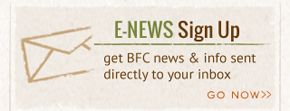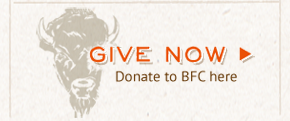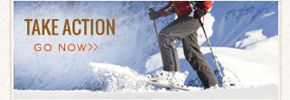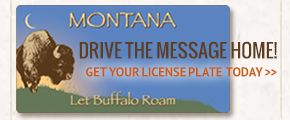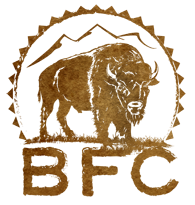Buffalo Field Campaign Dedicates Website to America's Last Wild Bison Herd
For immediate release:
Monday, April 30, 2007
Contact:
Darrell Geist (406) 225-4235; (406) 531-9284
Web interactive bison habitat and mapping site:
http://www.buffalofieldcampaign.org/habitat.html
Conservation status of American Bison as a native wildlife species:
http://www.buffalofieldcampaign.org/habitat/bisonconservation.html
West Yellowstone, Montana - Buffalo Field Campaign today released a Web site to bring public attention to the plight of the last wild bison and their native habitat in the United States. Through the Web site people worldwide can now explore and learn about the Yellowstone bison, their current range and habitat, and threats to their survival as a native wildlife species.
The wild bison advocacy group aims to raise public knowledge and build grassroots support to conserve and protect the Yellowstone bison and their native range.
"With release of this Web site, our aim is to generate public interest in and momentum behind on-the-ground efforts to benefit wild bison and their habitat in Yellowstone and beyond," says Michael Mease, Campaign Coordinator for Buffalo Field Campaign.
The Web site has two components: an Interactive Mapping Service (IMS) and a Wildlife Database.
During daily field patrols Buffalo Field Campaign volunteers record wildlife sightings of bison, elk, mule deer, moose, pronghorn antelope, whitetail deer, black bear, grizzly bear, wolf, coyote, beaver, bald eagle, golden eagle, great horned owl, great gray owl, osprey, trumpeter swan, sandhill crane, great blue heron, and many other wildlife species.
These wildlife sightings are mapped in Google Maps open source software. The interactive Wildlife Database allows people to view over 7,000 wildlife sightings in the Madison Valley and Gardiner Basin overlaid with satellite and topographic maps of the Yellowstone ecosystem.
"This new database finally enables us to utilize our field patrols to their fullest potential to track wild bison and analyze their habitat needs," says Jesse Crocker of Buffalo Field Campaign who designed the Wildlife Database.
"The Wildlife Database is an outstanding resource for educators, students, researchers and people worldwide who want to learn about animal migration and winter range habitat outside of Yellowstone National Park," added Stephanie Munce, Wildlife Database Coordinator for Buffalo Field Campaign.
A second component of the Web site was done in collaboration with Missoula, Montana based Big Sky Conservation Institute.
With the Interactive Mapping Service, people can view Yellowstone bison winter range and migratory corridors, National Forest grazing data and maps, and identify and search land use and ownership in the Yellowstone bison herd's range.
"The native range of wild bison is threatened with misuse and development, yet there is significant habitat available especially on public lands which must be opened up to them if wild bison are to have a viable future," says Stephany Seay, Media Coordinator for Buffalo Field Campaign.
Buffalo Field Campaign invites people to contribute their knowledge about Yellowstone bison, habitat and migration patterns, behavior and stories, particularly from indigenous peoples. The group hopes to reconstruct the historic range of Yellowstone bison to better understand how to conserve and protect the herd's native habitat. People interested in contributing should contact Buffalo Field Campaign.
Just over a century ago American Bison numbered 30 to 50 million spanning North America. Today, only the Yellowstone bison herd which numbers 3,600 animals, remains on its native range.
1,912 wild bison have been killed since 2000 under a taxpayer funded multi-million dollar Interagency Bison Management Plan. Since 1985, the state of Montana and Yellowstone National Park have killed more than 5,000 wild bison.
Wild bison have been captured inside Yellowstone National Park, and displaced from winter range and spring calving grounds in hazing operations led by the Montana Department of Livestock and the National Park Service.
Cattle grazing allotments on National Forest lands have encroached on the Yellowstone bison's native range.
Wild bison are ecologically extinct in the United States outside of Yellowstone National Park. There is a growing recognition in the scientific community that bison as a wildlife species are at risk of genomic extinction.
Some of the threats posed to wild bison include widespread cross breeding with cattle, habitat loss due to development and livestock grazing, domestication, artificial selection and intensive use of livestock management techniques, small herd and range size, isolation of populations, non-native diseases, and the continuing slaughter of conservation herds particularly in Yellowstone National Park.
"Wild bison are an irreplaceable part of America's natural heritage," says Darrell Geist, of Buffalo Field Campaign who assisted in the development of the Web site. "The American people need to get involved today to ensure that wild bison are truly recovered as a native wildlife species."
Buffalo Field Campaign is the only group working in the field, every day, to stop the slaughter of the wild Yellowstone buffalo. Volunteers defend the buffalo and their native habitat and advocate for their lasting protection.

